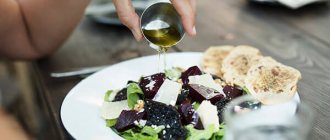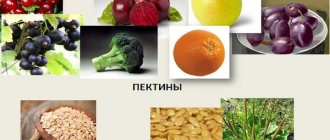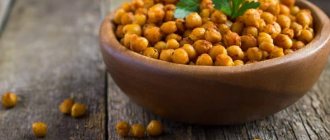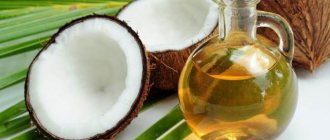In winter, banana, along with citrus fruits, is one of the most popular berries in our country. The annual consumption of these fruits is more than 7 kg per capita. As a rule, stores sell bananas of a certain variety that are about 20 cm long and no more than 3 cm in diameter. But, for example, in Thailand you can see fruits whose length is at least 3 times less. We will tell you in our article how a small banana differs from a large one. Here we will present customer reviews about the taste of bananas.
Benefits of bananas
The fruits are the basis of the diet in a number of countries. The fruit is picked green and ripe. They are used both fresh and for preparing various dishes. They are fried, boiled, baked, dried and dried. For tropical regions, these yellow fruits are a key export item. One of the reasons for such wide distribution is the benefits of bananas for the body.
Bananas are not just tasty food, but also extremely healthy.
Compound
The amount of useful components in the composition depends on the stage of their maturity and variety. The fruit contains a large amount of protein. 100 grams of ripe fruits contain approximately 1.9 grams, green ones contain slightly less – 1.1. The leaders in the amount of protein are dried fruits. The component content in them reaches 3.5 grams. When studying the benefits of bananas and their harm, it is worth noting that the fruits are rich in carbohydrates, which is not always good. Depending on the variety, the amount ranges from 19 to 84 grams. On the contrary, there is little fat in fruits: from 0.02 to 1.4 grams.
Table 1. Main nutrients in banana
| Name | Quantity per 100 g | Benefits and role in the body |
| Cellulose | 0.3-4.5 g | Fibers that are not digested under the influence of body enzymes, but are broken down by beneficial intestinal microflora |
| Calcium | 3.2-50 mg | Beneficial in the formation of skeletal bones. Regulates muscle contraction, participates in the synthesis of hormones and neurotransmitters in the body |
| Phosphorus | 16-65 mg | Takes part in the formation of the skeleton, hair and nails. Contains organic compounds important for the body |
| Iron | 0.4-2.7 mg | Necessary for hemoglobin synthesis. Anemia develops when there is a lack of iron in the body. |
| Beta carotene | 0.06-45 mg | Strong antioxidant. Supports the body's immunity. Harmful for smokers if consumed in excess |
| Potassium | 0.6-2.8 mg | Provides muscle contractions in the body. Maintains acid-base and water balance |
What vitamins does it contain?
The beneficial properties of bananas are largely determined by the vitamins that make up the fruit. The yellow fruit is rich in B vitamins, vitamin C and niacin.
Table 2. Vitamins that determine the benefits and harms of fruits for the body
| Name | Benefits for the body | Harm to the body |
| Vitamin B1 | Ensures normal functioning of the heart muscle. Participates in the formation of other muscles of the body | If in excess, it can cause anaphylactic shock due to harm to mast cells. |
| Vitamin B2 | Promotes the synthesis of red blood cells. Necessary for the formation of epithelium, hair, nails | Excess will not cause harm to the body. The vitamin is not able to accumulate and is excreted in the urine |
| Vitamin PP (nicotinic acid) | It is an important component for the normal course of metabolism. Takes part in the formation of a number of enzymes. Benefits the thyroid gland | Excessive consumption leads to heart rhythm disturbances and incorrect liver function. Harm may manifest itself in disorders of the gastrointestinal tract |
| Vitamin C | Powerful antioxidant, involved in the metabolic process, extremely important for the body | It will harm the absorption of vitamin B12 by the body. May cause kidney stones due to hypervitaminosis |
When answering the question of whether bananas are healthy, it is important to focus on their quantity. Excessive consumption of any product can harm the body.
Calorie content
The nutritional value of a fruit is determined by the number of calories. The amount of energy a person receives after eating fruit depends on them. Calorie content, as well as the benefits of bananas for the body, varies depending on the variety, stage of ripeness and form of processing.
Table 3. Calorie content and benefits of fruits
| Name | Number of calories in dessert varieties per 100 g (kcal) | Variety Platano (kcal) |
| By stage of ripeness | ||
| Mature | 65-111 | 110-157 |
| Unripe | up to 108 | 90-146 |
| By type of processing | ||
| Dried | 298 | 360 |
| Flour | 340 | — |
The benefits of banana for the human body are significant. However, it is quite difficult to call it a dietary product due to its high calorie content.
Beneficial features
The fruits contain tryptophan, which is involved in the synthesis of serotonin.
It helps improve mood, reduces the effects of experiences on the body, and increases performance. In addition, the combined consumption of tryptophan with antidepressants leads to increased effectiveness of the drugs. Their consistency plays a significant role in the benefits of bananas. The viscous texture and high fiber content have a cleansing and enveloping effect. Consumption of fruit helps normalize stool, effectively cleanses the body, and has a beneficial effect on digestion.
The benefits of fruits for the heart are provided by the potassium included in the composition. The element is necessary for heart function and blood pressure regulation. Consumption of potassium helps thin the blood and prevents blood clots. However, an excess of the mineral can be harmful.
The calcium in bananas will benefit your bones and muscles. It is extremely necessary for a growing child's body. Its high protein content makes the fruit an important part of the diet for those looking to build muscle mass. The fruit is an excellent snack option. It will quickly restore energy, help cope with intellectual tasks and relieve fatigue.
Customer Reviews
According to buyers, small bananas have a richer, brighter taste. However, in stores they are sold at 2-3 times more expensive than standard-sized fruits. Some people, on the other hand, find them a little dry compared to larger bananas.
The choice of which banana to prefer - large or small - depends only on the buyer and his financial capabilities. Most people prefer finger fruits for their taste, but only if they are well ripened. Otherwise, it is better to choose not a small, but a large, but ripe, bright yellow banana. In any case, their nutritional value, calorie content and benefits for the body will be equally high.
Which ones are better?
On store shelves you can find fruits of different sizes, maturity and varieties. Which bananas are healthier depends on what exactly a person wants to get from consuming the fruit.
Green or ripe (yellow)?
Ripe fruits have a high calorie content, a higher proportion of protein and significant moisture content.
In addition, only ripe dessert fruits contain a precursor of vitamin A - beta-carotene, which is beneficial. Only yellow fruits are rich in ascorbic acid, which is very important for understanding which bananas are healthier, green or ripe. Also, only at the stage of ripeness do lysine and methionine appear in the composition, which are essential amino acids.
However, in search of an answer to the question of which bananas are healthier, green or yellow, it is important to note the advantages of unripe fruits. We are talking about fruits that are close to ripeness and have a slight yellowish tint. They last longer, have fewer calories and have a lower glycemic index.
Small or large
In countries where the fruit is grown for export, large fruits are considered fodder. They are used to feed farm animals. They are less sweet, do not have a distinct aroma and bring less benefits. Small bananas are called dessert bananas. They have a large proportion of potassium, phosphorus, iron and other essential substances.
When answering the question of which bananas are healthier, small or large, experts lean towards the former. The disadvantages of miniature fruits include their high cost.
Fresh or dried
The benefits of bananas are also influenced by the processing of the fruit. Dried fruits are also rich in minerals and contain plenty of vitamins and fiber. They benefit digestion and have a beneficial effect on the heart. However, they are higher in calories than fresh ones. The sugar content in dried fruits is many times higher. They should not be consumed if you have diabetes or obesity - this is harmful to the patient’s body.
What are the features of baby bananas?
As we already wrote above, dwarf baby bananas are very sweet and have a more pronounced taste (increased content of vitamins and microelements than in regular bananas). Where did they come from?
The dwarf banana plant has been cultivated since ancient times. This plant was brought by legionnaires of the Roman Empire from the tropics. And it was named in honor of Antony Mus, who was the physician of Octavian Augustus (the first Roman emperor). Dwarf bananas are in turn divided into another 40 species, but they are already common in the tropics.
How are they useful?
At different ages and for different categories of people, the benefits and harms of fruit for the body may be different.
For women
Consumption of the fruit for the fair sex will benefit not only health, but also appearance. You can eat both ripe and green bananas. The benefits for a woman’s body are expressed as follows:
- effective cleansing of the body, benefits for cleanliness and freshness of the skin;
- consumption of fruit relieves fatigue, gives a boost of energy, and is beneficial during stress;
- relief during premenstrual syndrome and menstrual periods, due to stimulation of serotonin production.
Which bananas are the healthiest for women? It is better to give preference to unripe fruits; they contain fewer calories and will not harm your figure. Losing weight with ginger.
For men
According to statistics, men are more likely to suffer from cardiovascular diseases. Representatives of the stronger sex over 45 years of age are a risk group. Banana, the health benefits and harms of which are described above, has a beneficial effect on the heart. For digestive problems, it is also recommended to include this fruit. However, in case of diarrhea, green bananas are prohibited. The balance of benefit and harm in this case is violated: they can lead to intestinal upset. Benefits of ginger for men.
For children
The fruit is a source of calcium, which the child’s body needs for growth and development. Ascorbic acid has a general strengthening effect and helps improve immunity. The fruit is suitable for an afternoon snack or for recuperating after a hard lesson. If consumed in excess, it causes harm, for example, sometimes causing allergies.
How are ginger, honey and lemon good for the immune system and how to prepare a mixture of them according to the correct recipe? Should children be given ginger and at what age can this be done? What is dried ginger?
When breastfeeding
Experts have different opinions about the consumption of fruit during lactation. The harm of bananas for a child may be due to early introduction into the diet of a nursing mother. If the child has not reached one month, then you should refrain from consuming the fruit. In addition, producers sometimes process bananas for transportation. The ratio of benefit and harm to the body will not be in favor of the latter.
During pregnancy
A balanced diet is very important for pregnant women. Let's figure out whether bananas are good for the health of a pregnant woman. Depending on the trimester, the fruits help fight toxicosis, normalize digestion, and have a strengthening effect on joints and bones. Ginger during pregnancy.
Can you grow dwarf bananas at home?
They adapt well and don’t mind the heat. They are able to grow at normal room temperature, not lower than 15 degrees.
Currently, only one species is widely known - the dwarf Canary banana, first brought in 1829 from China. Grown in Florida and the Canary Islands.
In the house, this miniature variety can only be grown in a well-lit place. Another method of growing it is the hydroponics method, which is only applicable to mature plants initially grown in soil.
The fruits of such bananas are seedless; they can only be propagated by rooted lateral shoots. They exist on their own roots and reach up to 150-200 cm. It is better to choose a plant with new growth, without brown spots on the edges of the leaves, preferably with whole leaves. They must be transported home with great care.
A minimum of care and this plant will take root very well in the house. But you should prepare a lot of space for it so that you can enjoy the delicate taste of sugar bananas.
Is it good or bad for the body?
It is known that some foods are best eaten in the morning, while others, even with a night snack, will not cause harm.
For breakfast
A morning meal can give you energy for the whole day. Many nutritionists recommend eating bananas for breakfast. Is it really useful or not? Consuming fruit in the morning will not only prevent you from feeling hungry for a long time, but will also give you a good mood. In addition, the body will have enough time to absorb all the nutrients.
Oatmeal with banana slices and honey is a great start to the day.
For the night
It is better to opt for lighter foods than eating bananas at night. Is it good or bad to eat yellow fruit and go to bed? Unfortunately, the fruit takes quite a long time to digest. Intense digestion will certainly affect the quality of sleep. Glucose and fructose have an invigorating effect. If you want to get a good night's sleep, then you should eat fruit with benefits the next day.
On an empty stomach
You can eat both large and small bananas on an empty stomach. The benefit is that the fruit quickly satisfies hunger and facilitates the intellectual activity of the body. Its enveloping texture does not cause harm to the gastrointestinal tract, and its mild taste does not provoke thirst. You can take the fruits with you on the road and, if necessary, eat bananas on an empty stomach. The benefits and harms here are shifted towards the former.
For heart
The beneficial effects on the cardiovascular system have already been discussed above. Even cardiologists include these yellow fruits in their patients' diets. What beneficial substances in bananas play a significant role in heart function:
- potassium – ensures the passage of impulses and heart contractions;
- calcium – necessary for the rhythmic functioning of the heart and important for contractility;
- nicotinic acid – helps to dilate blood vessels and normalize blood pressure in the body.
Only a specialist can determine whether bananas are good for the heart in a particular case. In the absence of contraindications, reasonable consumption of the fruit will not cause harm.
For the liver
This organ liked the exotic fruit. The high fiber content helps cleanse the body and facilitates liver function. However, an excess amount of fruits in the diet leads to a significant intake of fructose into the body, which causes harm to the organ. Whether bananas are good for the liver depends on the amount in the diet.
A banana will be beneficial not only to the liver, but to the entire body as a whole.
For the stomach
Benefits and harms depend on the state of health and characteristics of the body. Bananas are good for the stomach of a healthy person or those with chronic diseases. Acute pathologies require that the fetus be excluded from the diet. With an ulcer, acute pancreatitis or cholecystitis, the fruit can be harmful. A good laxative effect can be achieved by eating kefir with a banana. Benefits and harms depend on the indications.
Composition and calorie content
Calories 89 kcal
- Fat:
0.3 g - Proteins:
1.1 g - Carbohydrates:
22.8 g - Water:
75 g - Ash:
0.8 g - Fiber:
2.6 g
| Vitamins (per 100 g): | Quantity | %RDN |
| Vitamin B6 (pyridoxine) | 0.37 mg | 19% |
| Vitamin B7 (biotin) | 4-8 mcg | 12% |
| Vitamin C (ascorbic acid) | 8.7 mg | 10% |
| Minerals (per 100 g): | Quantity | %RDN |
| Bor | 372 mcg | 531% |
| Silicon | 77 mg | 257% |
| Rubidium | 63 mcg | 63% |
| Potassium | 358 mg | 14% |
| Manganese | 270 mcg | 14% |
Other important connections:
- Phytosterols
— 16 mg (29% of RDA)
- Purines
— 11 mg (8.3% of RDA)
- Oxalic acid
— 0.7 mg (0.2% of RDA)
Full chemical composition ➤
Use for cough
The benefits and harms of bananas are widely known, including for cough therapy. In this case, the fruit acts as an additional ingredient in the preparation of various home remedies. Banana improves taste and makes the medicine attractive even to children. The benefit also lies in the enveloping texture. It helps relieve sore throat and softens cough.
Recipe with honey
Honey itself is an excellent product for the body. It contains huge amounts of glucose, fructose and sucrose. It is rich in B vitamins, ascorbic and folic acids, beta-carotene, etc. Honey is quite effective for cough therapy. It is better to mix crushed large or mini bananas with the product.
The benefits and harms here are not always predictable. Some types of honey can cause allergies and aggravate the condition. To prepare home remedies, you need to purchase only high-quality honey. In the presence of biological or chemical impurities, it will not bring benefit to the body, but harm.
You can grind the banana into puree, or you can simply serve it in pieces with honey.
Cocktail with milk
Warm milk has been used for home therapy since ancient times. Oil, honey, soda are added to it. The “Banana and Milk” cocktail can also be used. The benefits of the product include a pleasant texture, a large amount of nutrients and a pleasant taste.
For therapy, you need to take only freshly prepared product. If left standing, such a cocktail will only cause harm. For example, it can cause indigestion. You should drink the cocktail in the morning or afternoon; you can consume milk and bananas on an empty stomach. The benefits and harms for the patient in this case will remain the same.
Harm of mini bananas and contraindications
- individual intolerance of the body will force you to give up this delicious fruit;
- due to long digestion, the product is not recommended to be consumed before bedtime, causing fermentation in the stomach and a weak outflow of bile may be observed;
- diabetes mellitus forces you to reduce the consumption of bananas to a minimum, since the concentration of natural sugar, especially in mini bananas, is too high.
Use the product in moderation, after or before training, avoid taking it a couple of hours before bedtime and enjoy the aroma without harm to your health!
Useful video
In many countries, bananas are one of the main sources of nutrition - for example, in Ecuador alone, the annual consumption of this product per capita is 73.8 kg (for comparison, in Russia this figure is 7.29 kg). Edible varieties of bananas are conventionally divided into two main groups: dessert, consumed mainly raw or dried, and plantains (or platano), which require heat treatment before consumption. The pulp of dessert varieties is very sweet in taste, contains a large amount of carbohydrates, vitamin C and some minerals necessary for the body:
What is the difference between small bananas and large ones?
There are about 500 varieties of bananas in the world, most of which are edible. However, only 2-3 types of this berry are imported to Russia.
The most common variety is Cavendish. Large, bright yellow fruits with a thick peel and sweet, elastic pulp reach a length of 25 cm. As the banana ripens, the pulp becomes softer. This variety is grown in Taiwan, the Hawaiian Islands, Ecuador, Colombia, Australia and other countries. These are the same bananas that are most often presented on store shelves.
In a number of tropical countries in Central America and Central Africa, in Thailand you can see not a standard, but a very small banana. This variety is called Lady Finger or Lady Finger. The fruits of this plant are no more than 10 cm in length. Bananas with yellow, thick skin have very sweet flesh, much sweeter than traditional varieties. In terms of gastronomic quality, they are several times better, but their cost is much higher. Sold in bundles of 12-20 pieces.
At first glance, a small and a large banana differ only in size and slightly in taste. Let’s look at how similar they are in nutritional value below.
Application in cosmetology
It is almost impossible to come up with a simpler and more affordable facial procedure than a banana mask. Mash the ripe fruit into a pulp and apply to the face - that’s all you need to moisturize dry areas of the skin and smooth out fine wrinkles. And if we add honey and egg yolk, we get a rejuvenating effect.
For cosmetic purposes, we also need the peel. We rub the inside of the cleansed skin with it for 5-10 minutes, then after 20 minutes we rinse our face with cool water. If you repeat this simple procedure every day for a month, the skin will become velvety and stop flaking.
A banana mask is also very beneficial for our hair. Mix the pulp of 2-3 ripe fruits with 3 teaspoons of yogurt, the same amount of honey and apply to the hair and scalp for half an hour, then wash your hair as usual.
This mask strengthens weak, brittle hair and prevents hair loss. Once a week for three months will be enough to achieve a healing effect.











